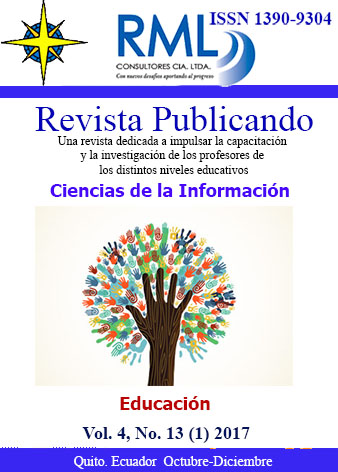Resumen
The article deals with the comparative study of the poetics of figurative in various national literatures. This topic has not previously become the subject of special philological works, but the study of it in a comparative aspect based on the material of Russian and Tatar poetry is important. The actual basis of the article is well known works of Russian classical poetry and Tatar literature of the early 20th century. A comparison of the figurative devices has showed that in the Tatar lyric poetry, which goes back to the traditions of the Arab-Muslim cultures, the poets aimed to emphasize the idea of variability, incompleteness of everything existing, of human entity. And on the contrary, the idea of the triumph of God, that is at the head of everything that seeks a form, was spontaneously expressed in their literary works. A special role in creating a pictorial image is played by Sufi symbols (female curls, full moon, star), which gave rise to the semantic duality of the works of Tatar poets. The analysis of the figurative ekphrasis in a comparative aspect confirmed that it is not typical for the poetics of Tatar literature of the early 20th century, first of all, in its content that has developed in Russian and Western European traditions. Such feature of poetics is explained by the national identity of Tatar literature, its connections with religion which denied the idea to use words in order to plastically and sensually depict a work of fine art, for instance, a picture or a portrait.
Referencias
Amineva V.R. Phenomenon of border in interliterary dialogues // Journal of Language and Literature. – 2015. – V. 6 (2). – P. 246-249.
Amineva V.R., Ibragimov M.I.,Nagumanova E.F., Khabibullina A.Z.G.Tukay”™s poetry: the aspects of national identity// XLinguae European Scientific Language Journal. Volume 8. Issue 1, January 2015. P. 79 – 87.
BakhtinM.M. TowardsMethodologyofHumanities// Aesthetics of Literary Works. – Ðœ.: Art, 1986. – P. 381-393.
Dermend ШиÐырьләр = Poems. –Kazan: Tatar Publishing House, 2009. –160 p.
Edikhanov I.Zh., Bekmetov R.F. Dostoevsky and East // Journal of Language and Literature. – 2016. – v. 7 (3). – p. 176–179.
Finger A.Comparative literature and interart studies// Companion to Comparative Literature, World Literatures, and Comparative Cultural Studies. – January, 2014. – P. 124-136.
Gadamer H.-G. Truth and Method: Bases of a philosophical hermeneutics. – M.: Progress, 1988. – 704 p.
Ibragimov M., Kamaliyeva R. Multiplicity of identification in the cycle by R.Bukharayev «The agony in the garden » // Journal of Language and Literature. – 2015. – v. 6 (4). – p. 385 – 387.
LosevÐ.F. TheProblemofVariationFunctioningofPictorialImageryinFictionalLiterature// Literature and Painting. – L.: Science. LeningradSection, 1982. – P.31-65.
LermontovÐœ.Y. Writings: in 2 volumes. – Ðœ.: Pravda, 1988. – V.1. – 720 p.
Panikkar R. Indology as a cross-cultural catalyst (A new task of indological studies: cross-cultural fertilisation) // Numen. – 1971. – v. 18, â„– 3. – p. 173–179.
PushkinÐ.S. Writings: in 3 volumes. – Ðœ.: Fiction, 1987. – V.1. – 735 p.
RamievS.L., BabichSh.Ðœ. Works. – Kazan: Magarif, 2005. – 287 p. (in Tatar).
Rusieshvili-Cartledge M., Dolidze R. Ekphrasis and its multifaceted nature: Ways of its usage in literature and cinematography // International Journal of Literary Humanities, 2015. – â„–13(3). – p. 1-8.
RubinsÐœ. PlasticPleasureofBeauty(Ekphrasisin Works of Akmeists and European Tradition). – SP: Academy Project, 2003. – 354 p.
Rubins M. Crossroad of Arts, Crossroad of Cultures: Ekphrasis in Russian and French Poetry. – New York: Palgrave, 2000. – 302 p.
SedykhE.V. TowardstheProblemofIntermediality: Picturesquein Poetic. 2011. URL:http://elar.urfu.ru/bitstream/10995/26942/1/paverman-02-2014-14.pdf, Free. Verified 14.06.2017.
SafiullinY.G. ComparisonofLiteratures// TheTheoryofLiterature: The Dictionary for Students. – Kazan: Kazan University Press, 2010. – P. 97-99.
ShukurovSh. AboutPortrayingProphetMukhammadandthe
ProblemofConcealmentofRepresentationofFaceinIslamicMedievalCulture// Sufism in the Context of Muslim Culture. – Ðœ.: Science, 1989. – P. 252-267.
Tan J.Q. Ekphrasis and adaptation: Keats's Grecian Urn in modern American poetry // Foreign Literature Studies, 2010. – â„–32 (2). – p. 26-39.
UrtmintsevÐœ.G. Ekphrasis: ScientificProblemandMethods of its Studying // Herald of N. I. Lobachevsky Nyzhny Novgorod University.– 2010. – â„– 4(2). – 975-977.
YusupovaN.Ðœ. SymbolizationinTatarPoetryoftheBeginning of the Twentieth Century // Herald of the Udmurt University. History and Philology. – 2014. – Issue 4. – P. 111-114.
Usted es libre de:
Compartir — copiar y redistribuir el material en cualquier medio o formato
Adaptar — remezclar, transformar y construir a partir del material
La licenciante no puede revocar estas libertades en tanto usted siga los términos de la licencia
Bajo los siguientes términos:
Atribución — Usted debe dar crédito de manera adecuada, brindar un enlace a la licencia, e indicar si se han realizado cambios. Puede hacerlo en cualquier forma razonable, pero no de forma tal que sugiera que usted o su uso tienen el apoyo de la licenciante.
NoComercial — Usted no puede hacer uso del material con propósitos comerciales.
CompartirIgual — Si remezcla, transforma o crea a partir del material, debe distribuir su contribución bajo la lamisma licencia del original.
